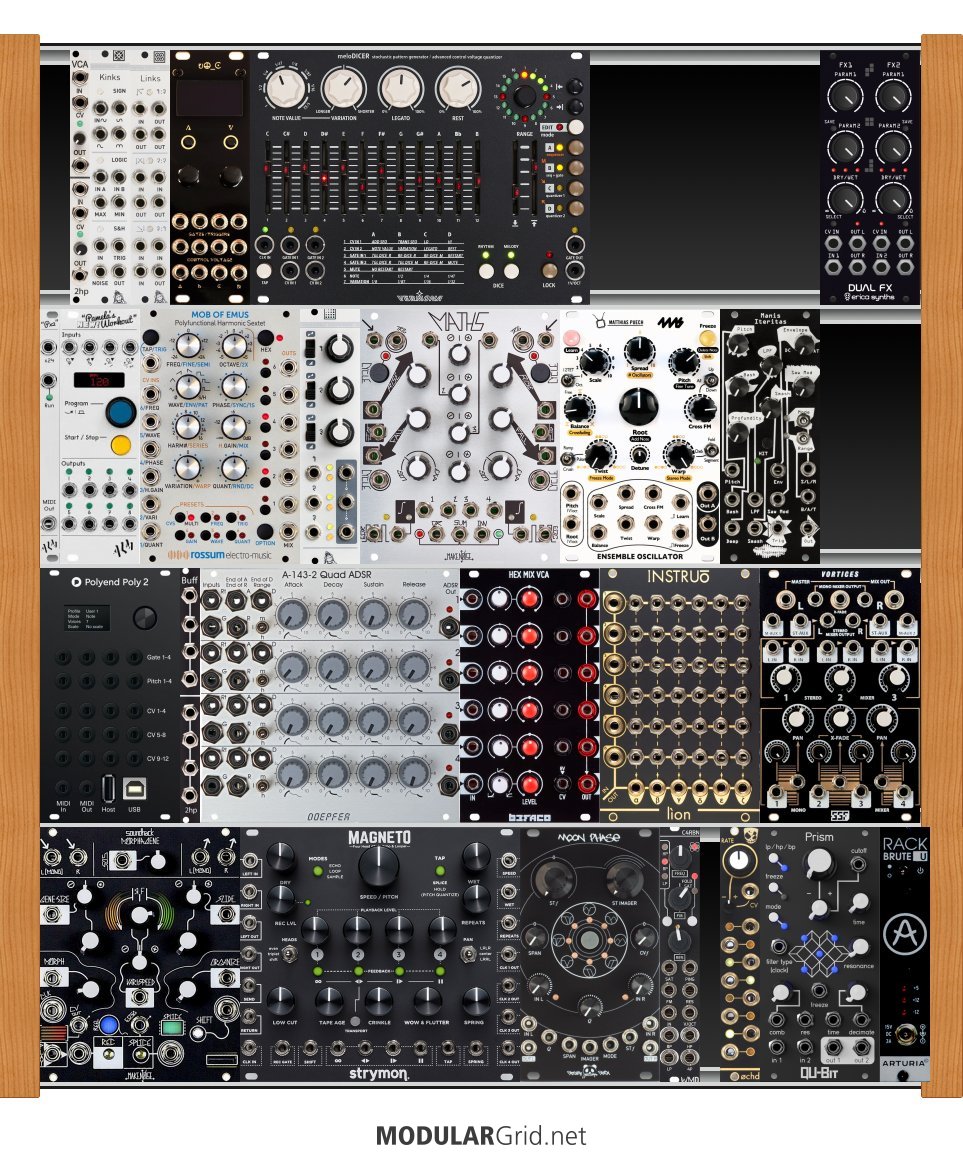Actually, there's not really any "standard widths" in Eurorack. You see 84 hp (and multiples thereof) a lot but that's because 84 hp is about the limit that you can jam into a 19" rackspace. But other widths you see include 60 hp (Moog), 104 hp, 126 hp, 140 hp (Uli), 168 hp (double 19" rack width) and 197 hp (from ADDAC, using 1 meter length rails). As a rule, most cab makers tend to stay with even-numbered hp amounts since the vast majority of Eurorack modules have panel widths that come out to even numbered amounts. But not all...
The real bottleneck on sizes comes down to power issues...amounts of headers on distro boards, power load capability vs. potential load from the modules, that sort of thing. However, there ARE ways to deal with those, plus you don't exactly have to use typical Eurorack supplies...with some poking around, you can find LINEAR power supplies that fit the bill. And yeah, linear supplies are worth the expense + weight, as they're quite incapable of spewing ultrasonic rubbish onto your DC busses, and they tend to tolerate inrush behavior better than switching supplies. No radiated fields, either, aside of the usual line frequency junk (which they're usually good at filtering out).
-- Lugia
Thanks for the insights on case widths. I'll keep that in mind when I build my next cabinet. (I'm trying to stick to my self-imposed moratorium on buying/building any more shiny toys until I accomplish something musically useful with all the stuff I have already bought/built :) Well, maybe one or two shiny toys if I've been a good lad...)
And you must have been reading my mind re: power. I was researching linear supplies only an hour or two ago, just to see what has come on the market since I built this system a year or so ago. I went with a low-cost switching supply to get started, figuring I could upgrade to linear later if noise became an issue. I encountered inrush issues straight away and wound up going with two supplies to split the load, even though the combined draw total was on paper comfortably below the steady-state rating of one supply on its own. (The vendor was a champ and gave me a break on the second supply.) So that lesson well learned!
I think I've lucked out so far with noise, knock on wood. I'm not hearing anything, and assuming I can trust the spectrum analyzer in Cubase, I'm not measuring anything above -100 dB. It's almost as clean as my MatrixBrute, if that's a meaningful point of comparison. Credit to the noise filtering on the distro boards, I guess.
However, on my next system I'll definitely go with linear, and may upgrade my current system sooner rather than later. I'm not happy with the way these supplies flicker on power-up and power-down; I cringe to imagine what that's doing to my expensive modules.
I like the looks of this tidy bundle from Konstant Lab: https://www.konstantlab.audio/shop/zdroj-set-high-end-linear-power-supply-bundle/ although I'd need twice as much +12V power to run my 400hp rig. Maybe they'll offer a beefier version in the months ahead.
Thanks again for your advice! And apologies to the OP for hijacking this thread :)


